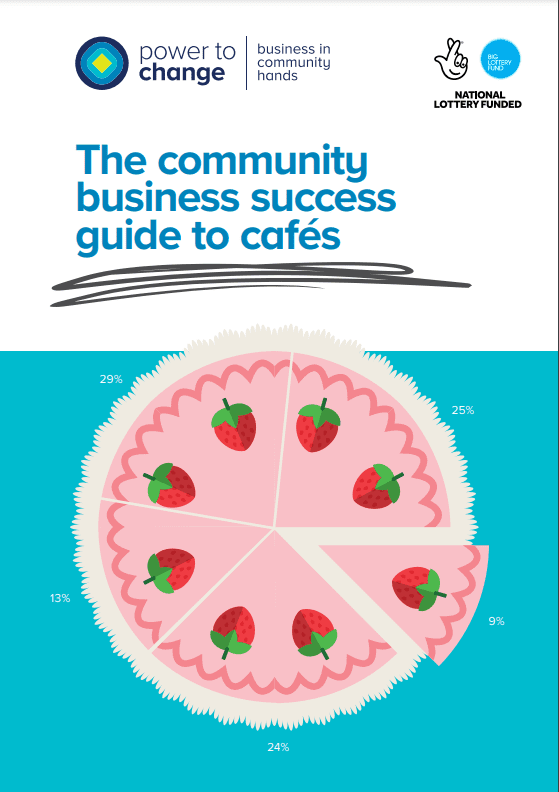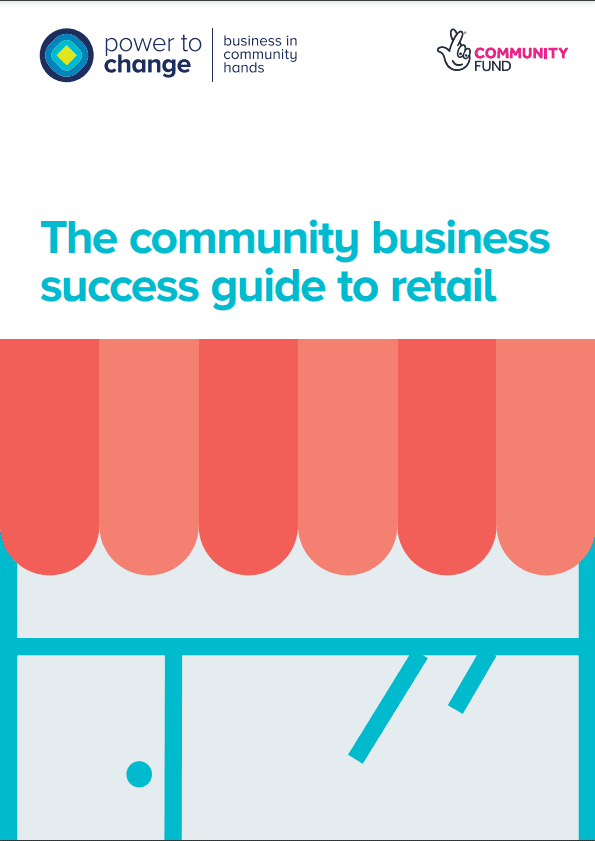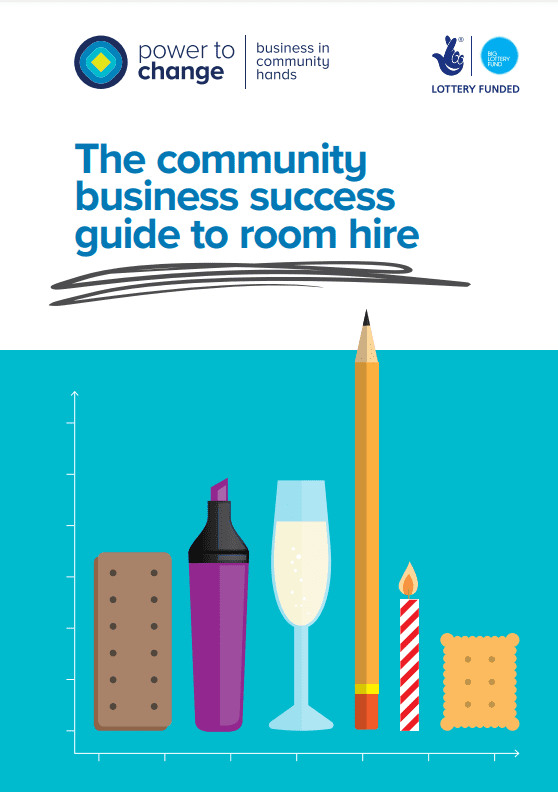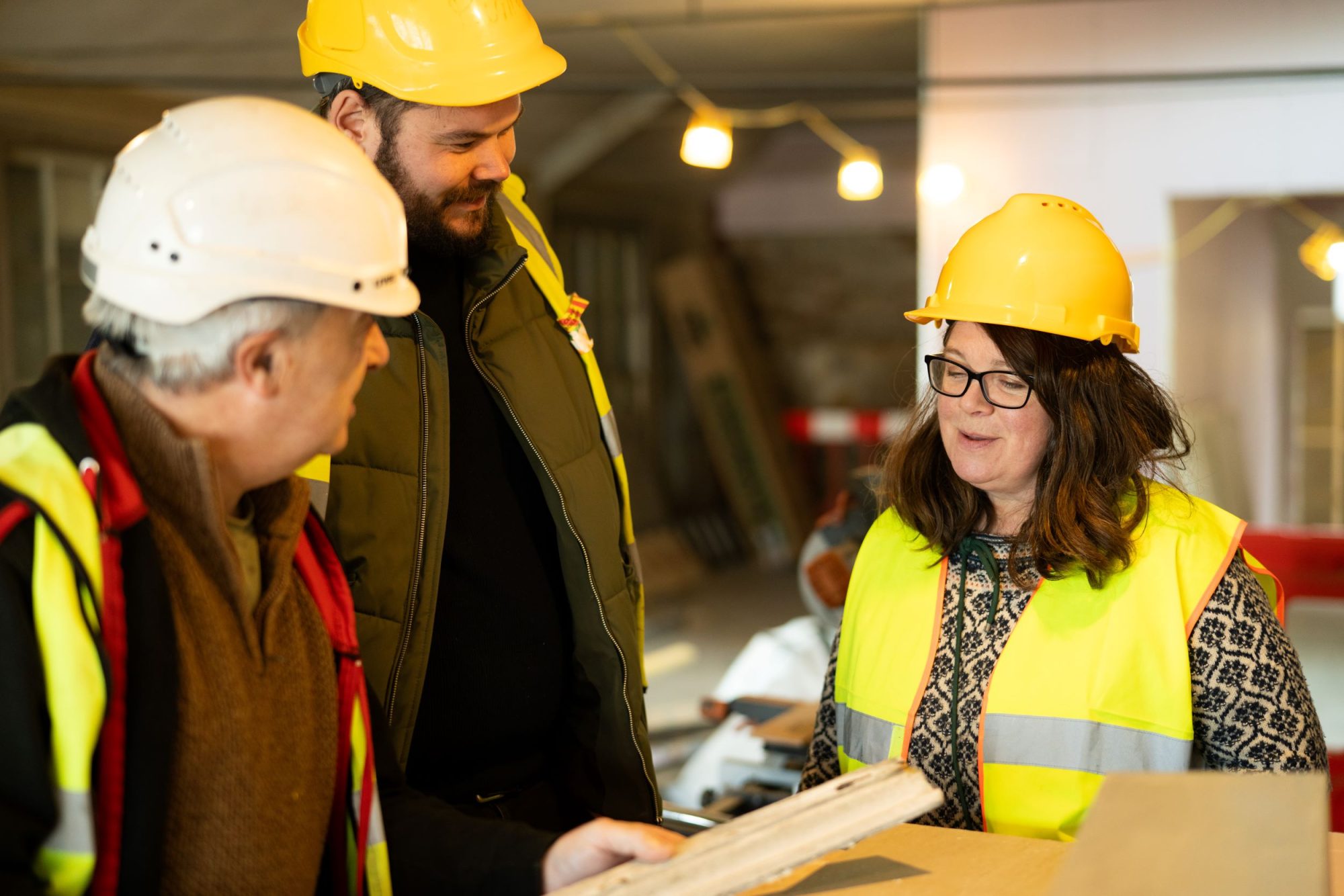TWINE /twʌɪn/
noun strong thread or string consisting of two or more strands of hemp or cotton twisted together.
verb wind or cause to wind around something.
Once upon a TWINE…
In 2015, Power to Change was set up as an independent trust to support community businesses in England. A year later, it created an in-house Research Institute to gather evidence that community businesses make places better. As there was very little existing data on community businesses and how they run, the team used a mix of methodologies to gather data at a hyperlocal level. They decided to develop a digital platform, TWINE. It would help community businesses collect and analyse their data, which Power to Change could then use to advocate on behalf of the community business sector.
“Our ambition was to create a data platform that was easy to use and of visible benefit to communities. And in exchange, we would get really high quality data that allows us to understand the whole community business sector.”
Richard Harries, former Director of the Research Institute, Power to Change
Over several years of development and iteration responding to community business needs, TWINE was developed into three community tech products:
- TWINE Volunteer – a free mobile app helping community business volunteers record their contributions without any paperwork, and helping community business managers better understand the work volunteers are doing. A hassle-free way to keep tabs on activities and projects and how much time and effort each requires.
- TWINE Visitor – a free web and tablet app that allows visitors to sign in to activities and events quickly and easily. The accompanying dashboard tells community businesses more about who they’re reaching in their community.
- TWINE Benchmark – a free online assessment tool to identify a community business’s strengths and vulnerabilities by comparing their financial data to a national data set. Here current and former Power to Change staff share the lessons they learnt while developing TWINE. We hope others wanting to develop community tech find their insight useful.
Chapters
With thanks to current and former Power to Change staff, the Institute for Community Studies and Digital Commons Coop for their insight and honesty: Fergus Arkley, Richard Harries, Stephen Miller, Jake Moffat, Kate Swade, Edward Walden, Sonja Wiencke. This report was written by Charlotte Cassedanne, and funded by Power to Change.
The start-up
In 2016, Power to Change’s Research Institute presented their idea to the board – a digital app that could help community businesses record their data, and that would aggregate it for Power to Change to use in policy influencing. The board agreed and the TWINE team got straight into development.
“When you get down to neighbourhood level, it’s very contextual. Interventions depend on the history of the place, and it depends on people there. It’s not like policy initiatives like crime reduction that get implemented across the country. You’ve got to be much more nuanced and sophisticated. So what we were trying to do is build up as much evidence as we can about what’s going on and what matters to local communities. And then present it back to policymakers in a format they can understand.”
Richard Harries, Director of the Institute of Community Studies (taking on Twine Benchmark) and former Director of the Research Institute at Power to Change
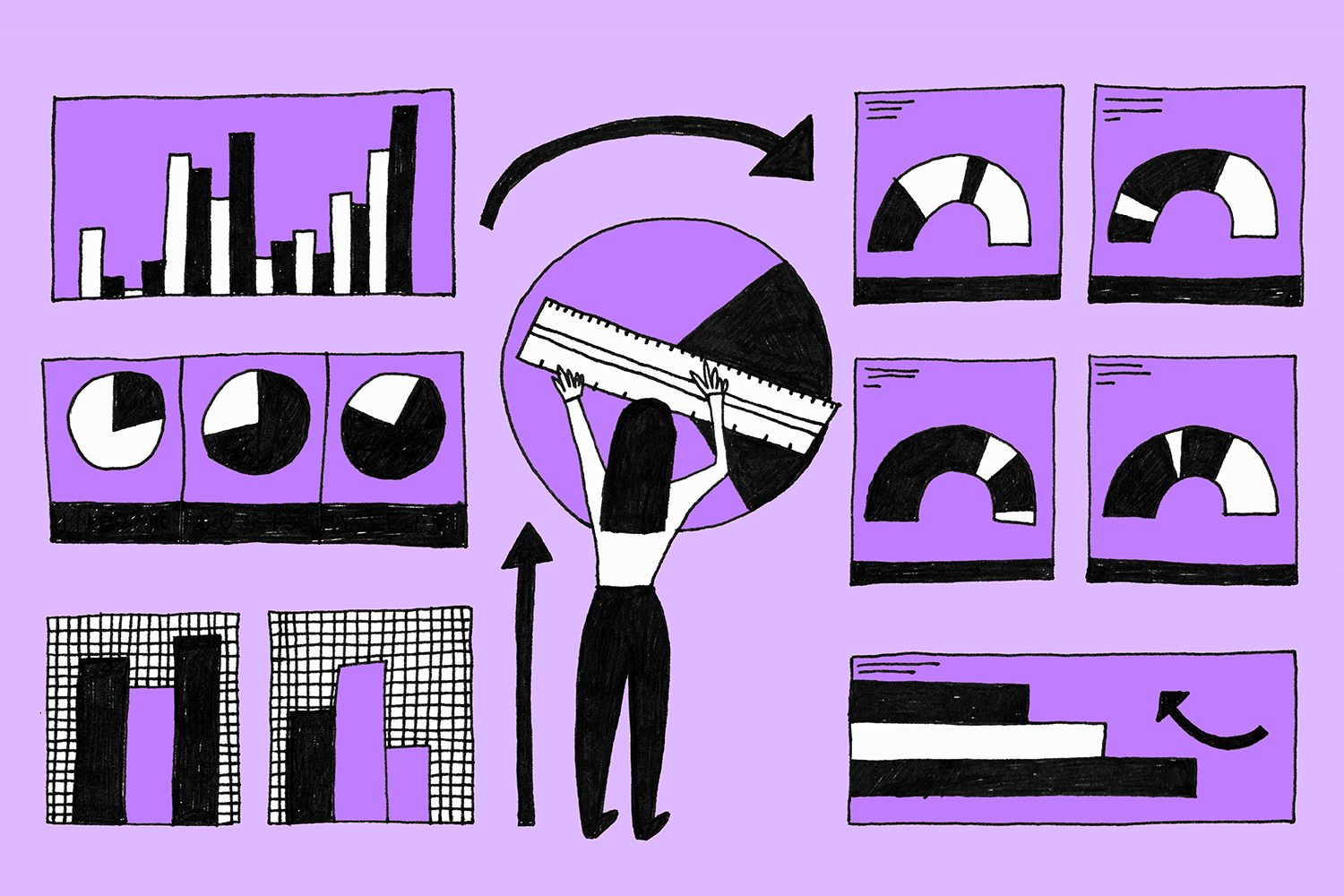
Surveys by text message
Early on, community businesses told Power to Change that they did not have enough time or capacity to ask their volunteers and visitors for feedback. To make it easier for them, validated surveys, such as the Net Promoter Score, were created on TWINE so that community businesses could send these to their beneficiaries directly by SMS. Texts were chosen at the time because research showed that these surveys have the highest response rate of any survey method. Aggregated survey results then lived in TWINE and were accessible by Power to Change. “It was a short survey which would maximise response rates. The reason we chose SMS was that everyone had a mobile phone that could do text messaging, rather than a smartphone.” said Richard Harries. Although the idea was good, it had some crucial flaws:
- Many community businesses didn’t have their volunteers’ mobile numbers
- Organisations wanted to send out bespoke surveys
- It cost a lot of money to run through an external agency
- It charged the end-user for responding to text messages
“It was a tool to make the admin work easier, but we also wanted to teach organisations how to do monitoring and evaluation properly. But what community businesses needed was making reporting easier to conduct. In practice, a lot of them wanted to have their own version of these SMS surveys because other funders required them to ask very specific questions of their beneficiaries. And we were saying, “No, we can’t do that” because we wanted them to ask validated questions and create a common baseline, which was a very difficult balance to strike.”
Sonja Wiencke, founder of EvalTech and former Data Analyst and Product Manager at Power to Change
“The data gathering idea was great. The customisation was great. The idea of cascading a lot of control and impact measurement skill set to community businesses was great. But the flaw was that we didn’t want to push costs onto some of the most vulnerable members of society in community businesses.”
Edward Walden, DEI Manager at Power to Change
The SMS surveys were eventually abandoned but the team reused lots of the back-end development to create their future products.
Creating success guides using community business data
Rather than wait years for aggregated data to be sourced from individual community businesses, Power to Change commissioned MyCake, a financial benchmark agency, to analyse publicly available financial data to create a benchmark dataset. This was used to create a series of ‘success guides’ to running a community business, which includes:
TWINE Volunteer and TWINE Visitor
Alongside the SMS surveys, the TWINE Volunteer mobile and desktop app was created to capture data about volunteers and reduce administrative burden of those running a community business. Volunteers (or managers) can enter how many hours they’ve spent on different categories of activity. This gives the business an overall picture of how much effort is being spent on which activities, so they can adjust resources. Data can also be used as supportive evidence, for example for grant applications. The TWINE Visitor product was designed a bit later during a hackathon with two junior coders, who then joined the TWINE team full time. The app can be installed on a tablet so visitors can sign in as they enter the community business. This helps the organisation track the number of attendees per class/activity/event, which can give them insight about which ones are the most popular, and run activities more effectively. However, the team encountered several challenges with both products:
- Purpose of the apps: Many community businesses wanted the Volunteer app to help them coordinate and manage volunteer hours, as well as log their hours and measure their impact retrospectively.
“A lot of community businesses didn’t have volunteer management systems in place so when they sought TWINE, they sought solutions to a dozen different problems that TWINE was never designed to address. They were engaging with it in earnest as a digital transformation tool.”
Edward Walden, DEI Manager at Power to Change
- Not taking a strategic view of feedback: The TWINE team was getting feedback about the Volunteer app as they developed it but from such a small amount of community businesses that the changes they made then didn’t address needs other organisations had. In hindsight, they also spent too much time focusing on making the app usable, rather than stepping back and taking a strategic view of what they were developing.
“I think [responding to user feedback constantly] prevented me from actually stepping back and asking, hang on, we’ve been very busy trying to do things right. But are we doing the right thing?”
Sonja Wiencke, founder of EvalTech and former Data Analyst and Product Manager at Power to Change
- Finding common pain points: Community businesses are a really diverse set of businesses. Some are tiny, one-person enterprises; some involve hundreds of people and multiple buildings. So finding common pain points was often tricky and what might solve a problem in one, wouldn’t be appropriate in another. However, more research could have helped identify those common pain points earlier on.
“In a lot of ways, community businesses are not as different from each other as they think they are. They’re always short staffed, measuring impact takes up time they don’t have, and they’re usually grant-funded somehow. But we should have done more research on what common information funders are asking for so TWINE could’ve helped capture that information. Gathering data for funders is a common paint point so we could have addressed that first.”
Sonja Wiencke, founder of EvalTech and former Data Analyst and Product Manager at Power to Change
- Interoperability: Organisations often wanted a tool that would integrate with other products and systems they were already using. This was tricky for TWINE as it was designed for data collection and impact measurement, rather than a tool that could work with other products. Eventually the team did add a Xero integration to help organisations plug in their accounts into the dashboard.
“I remember helping a community business launch the TWINE Visitor app at a luncheon. But then it turned out they already had a system for people to book ahead, and they were all regular attendees. So it didn’t make sense for people to sign-in again on the app. It made me realise, we need to find out more about how they run their business, and what other systems they already have in place.”
Sonja Wiencke, founder of EvalTech and former Data Analyst and Product Manager at Power to Change
- Low adoption: Power to Change promoted TWINE to all of the organisations applying to them for funding. And eventually they made it a grant condition that funded community businesses use TWINE to record their impact. This did increase subscriber numbers but it was still a struggle to convert them into active users. To support them, Power to Change hired a dedicated member of staff to visit each grantee, understand their business and how TWINE could support it. The team supported community businesses remotely, and visited them in-person to give tutorials and help community businesses understand how the products could be integrated into their day-to-day operations.
“We did try to be very personal with our support. And we tried as much as possible to find occasions in the lives of these community businesses where the TWINE apps would come in handy. That worked fairly well.”
Sonja Wiencke, founder of EvalTech and former Data Analyst and Product Manager at Power to Change
- The power imbalance: As Power to Change had made the use of TWINE a grant condition, this designed-in a power imbalance when the team visited organisations and asked for honest feedback. On reflection, this hindered development as grantees were reluctant to explain why they weren’t fit-for-purpose in a way that would have alerted the team the products weren’t quite right.
“The power imbalance meant that the conversations we were having were not the ones that you want to be having when you’re developing a digital product. We needed unbiased responses from people telling us “nice idea, but what we actually need is X”.”
Sonja Wiencke, founder of EvalTech and former Data Analyst and Product Manager at Power to Change

Tips on engaging your board with a digital product
- Get a digital champion. If someone on your board is tech-savvy, give them an early preview of your product development or include them in early meetings. They’ll be your advocate throughout your journey.
- Don’t treat your product as an asset. It can be tempting to add your product to your asset sheet but until it’s making a profit, it should show up as a liability.
- Link to the bigger picture. Tech on its own isn’t morally good or bad. So you need to give it context, purpose and meaning. How will your digital product support data democracy and alternatives to big tech? How will it support a community-specific issue that big tech will never develop a product for? Your board is more likely to engage with the strategic aims and benefits of your products, rather than the tech itself.
The pivots
Re-centering TWINE around community needs
By Spring 2018, Although the apps were free, useful and Power to Change put in place a TWINE support team to help community businesses adopt the tools into their organisational workflows, subscriber numbers were still low, and running costs were high. Rather than an asset on the balance sheet, it was a liability. The Power to Change board had supported TWINE’s development but were now approaching it with a more commercial mindset.
“One mistake we made was to treat TWINE like a finished product and turn it into an asset on the company’s accounts. This was a huge mistake because, it was in process, it had no intrinsic value. In theory, if it was successful, we had a cash flow forecast for it, it would generate income that would be of value to the organisation. But we shouldn’t have treated it as a tentative asset for accounting purposes. As soon as we did that, the board became very interested in its financial performance, which, in those early years, made no sense because we were constantly changing the specification and testing it with community businesses.”
Richard Harries, Director of the Institute of Community Studies (taking on Twine Benchmark) and former Director of the Research Institute at Power to Change
Under the management of a new Head of Impact, the team regrouped and changed tack. SMS surveys were halted which decreased costs considerably. And a new developer team took an agile approach to:
- Improve the look and feel of the apps
- Run more focus groups to find out what community businesses need, and how TWINE would integrate into the day-to-day running of their organisations.
- Research speaking to stakeholders to understand what data they needed from community businesses
- Launch more content marketing as they realised awareness of TWINE was still very low within the social sector.
A few things they learnt along the way included:
- Looks matter Although the apps were functional, the previous look and feel was clunky. The team prioritised improving the user interfaces which was well-received by community businesses. The apps were made more mobile-responsive so text was easier to read and it was easier to navigate on the go. And dashboards were improved to help organisations manage and understand their data. They also commissioned an illustrator, Sadie May Studio, to create engaging graphics that would visually explain what the TWINE apps would help people achieve.
- The importance of valuing data across an organisation While implementing TWINE, the team found that often there was a disconnect between the person from a community business signing up to TWINE, and those having to use it day-to-day. The latter weren’t seeing what the data was being used for, so they were reluctant to use it.
“The person who has the capacity and the ability, or is positioned well within the community business to implement it, was almost never the same person who had the oversight of the impact measurement and had the ability to actually use the data that it produced in a meaningful way. And so that kind of disjointed nature meant that there were lots of positive responses to TWINE, but exactly how it got implemented was always a lot more difficult.”
Edward Walden, DEI Manager at Power to Change
This points to two issues in community organisations – firstly, the siloed approach to impact measurement; and secondly, the disconnect between the people leading the strategy and those leading the delivery of the organisation.
- Understanding the benefits of the data beyond the organisation While gathering data and having a dashboard on TWINE gives community businesses insight on how to run their organisation, it also has the potential to help them gather evidence of impact. This can be used to influence local government, funders and local people to give more funding and support.
“The app could tell them how many volunteers they’ve had a year and how many thousands of volunteering hours. But the question is, what can they do with that proven impact? Can they get more funding? Can they leverage it with their local council to show their impact in a way that gets them to be treated more favourably or to get more respect from their local community, clinical commissioning groups or NHS Trusts?”
Jake Moffatt, Product Incubation Manager at Bain & Company, former Product Manager at Power to Change
“We spoke to local councils to find out what they want to know, and then work out how our tool can successfully help community businesses gather that in a frictionless and low effort way, to streamline getting funding more easily, or tracking data more easily, or reducing the overall capacity and time burden on producing the data that was often arbitrary or strange or proprietary.”
Edward Walden, DEI Manager at Power to Change
- Using content marketing to raise awareness and convert leads Although community businesses funded by Power to Change knew about TWINE, awareness of the brand and its tech products was very low in the wider social sector. The team set up a blog with thought pieces to create more of a conversation around the value of tech generally, and how it could support business management. They also started attending tech events to expand their reach and attract new leads, which resulted in several social enterprises being interested in the products.
“When I started, very, very few community businesses knew about TWINE and Power to Change didn’t really have much of a voice in the community tech space. The majority of the reaction was, “Oh, I didn’t know that existed, but it sounds like a good idea.” We could have spent more time working with people who were interested and thought it was a good idea and seeing how many of them would pilot the software, how many of them would do case studies to understand where they were struggling or where the software needed to change for them.”
Jake Moffatt, Product Incubation Manager at Bain & Company, former Product Manager at Power to Change

Tips on developing community tech
- Never rush to the technical and know your audience first. Spend time listening to your users and what they actually need and how it will fit with how they run their business day-to-day.
- Consider in-house developers. They’re able to respond more quickly to bug-fixes and really understand your audience, whereas bigger agencies will always prioritise big-paying clients and high-profile projects so issues could take weeks rather than days to solve.
- Take an agile approach. Spending time testing, developing and testing features again in two week sprints can make development more manageable, ensure their fit-for-purpose and reduce hefty development fees. Check out NCVO’s handy guide to test and learn.
- Check the tech is appropriate. What worked on a test run at your desk may not work for your users. Test it in situ.
- It’s a long game. Developing tech takes time and money for a reason. Be patient and manage stakeholder expectations while you learn, iterate and develop.
- Focus on the benefits of data gathering and analysis. Find out who your users are trying to convince, persuade or influence and find out what data they need to believe them, or become their supporter.
- Beware of skewed data due to hyper-localisation. When tech is driven from the grassroots, you’re more likely to get a skew on the data because it may be used in a way you hadn’t anticipated. For example, it might take off regionally, it might work for a sub-industry. You need to be aware of that when you’re collecting the data and drawing conclusions.
In unprecedented times
With so much time spent listening to users and developing features, Power to Change was more than ready to adapt the TWINE products to respond to Covid-restrictions in Spring 2019. They tweaked the Visitor app so that people could log their contact details, way before the government’s Track & Trace software was up and running. And they created a new digital product to help community businesses better understand their financial health. TWINE Benchmark The team decided to make the financial accounts database they had, aggregated by MyCake a few years earlier, public. They quickly created TWINE Benchmark, so that community businesses could assess their financial health in comparison to other similar-sized organisations in similar sectors and regions. Power to Change also used the database to figure out what amount of emergency Covid-support grant they needed to provide to different organisations.
“We’d already invested in building this database of financial accounts and immediately thought about an alternative use for it. And we had the product development expertise in-house to quickly build this externally facing dashboard so that organisations can better understand what the potential impact of lockdown restrictions was going to be on them. We were used to being agile with TWINE which helped us respond in crisis.”
Stephen Miller, Director of Impact and Learning at Power to Change
Prioritising digital transformation Another consequence of lockdowns was the need for community businesses to run their services online. Many had never made the leap to digital, and the digital skills gap that the TWINE team had previously come across, was now blatantly obvious to the rest of Power to Change and the wider social change sector. While a lot of emergency support was put in place to teach organisations how to create online shops, run community events and support services remotely, a longer-term impact for Power to Change was that digital skills became part of their ongoing capacity building programme, Powering Up.
“Pre-Covid, TWINE was not really integrated into Power Change’s work although the team was spotting a lack of digital maturity capabilities amongst community businesses, but it was a really low priority for the organisation. But when all the lockdown restrictions hit, the need to improve digital skills and capabilities became more urgent. That really accelerated Power to Change’s investment in digital transformation, and it’s now a key theme we’re focusing on in our new strategy.”
Stephen Miller, Director of Impact and Learning at Power to Change

The future
As TWINE moves over to Digital Commons and the Institute for Community Studies, its products will enter a new phase of use and development, in a very different world from when it started. There are many more tech products out there, but day-to-day most of us interact with giant tech companies such as Google, Salesforce and Amazon. With data comes power, and digital tools like TWINE can help more communities have ownership and power over their data.
“We believe that data is a common good, and that there’s a real disparity in the world at the moment where people with money and power have access to data and the tools to analyse that data in ways that help them get more money and power. And people without a lot of money or resources or power often either can’t access the data, don’t know that it exists, or when they can access it, it’s in quite a technical or a specialist format. We see TWINE as a way for community businesses to better understand their data and particularly the data around volunteers and visitors.”
Kate Swade, Digital Commons Coop
Helping communities understand the value of data
It can be tricky for community workers to prioritise data capture, tech development and data analysis in their day-to-day jobs. There are huge pressures to deliver, so supporting the social change sector to understand the strategic power and value of data is a challenge.
“The alternative to the standard models, and what we tried to do with the TWINE products, is to suggest changes to the way people operate so that they can still use it and get the value. For example, registering people with TWINE has more value than registering them in a spreadsheet because it’s creating an evidence base for the organisation. This data could help them shape their diversity, equity and inclusion strategy. It could prove that the methods and programmes that they’ve run six months before have had a tangible effect on who is reaching their services. However, tech installation and tech adoption are awkward problems, even for businesses that have the resources to handle them. And tech is not everyone’s favourite job. If you have a leaky roof at your community centre, then you need to fix it before spending an hour on a new digital platform. Getting your 20 volunteers, five of whom you only see once every two weeks to do tech training may not be the most important thing.”
Jake Moffatt, Product Incubation Manager at Bain & Company, former Product Manager at Power to Change
Tech led by communities
There is however, a growing movement of leaders within the community sector who do recognise the value of data and tech being community-led. And they could hold the key to the success of community tech. While funders can continue to financially support the development of digital products, the development needs to be led by people who have a vested interest in its success.
“In the same way that open source software is designed and built and maintained by the people that use it, successful community tech is shaped and led and managed by those in the sector. They are the sales team, the integration and operations team, the word of mouth, and do a little bit of the troubleshooting as well because they have that skill.”
Jake Moffatt, Product Incubation Manager at Bain & Company, former Product Manager at Power to Change
“TWINE was created partly because big tech platforms are about scalability and replication which doesn’t fit with small organisations like community businesses. They’re driven by their values such as owning their data, having the code available in the commons, respecting the integrity of users by not collecting personal information, and keeping tools free or as low-cost as possible.”
Fergus Arkley, Digital Innovation Manager at Power to Change
Digital transformation is one of the main challenges Power to Change’s current strategy is trying to support. As well as integrating digital upskilling into their capacity building programme, Powering Up, they’ve also launched a community tech funding programme to support existing, innovative community tech organisations. As for TWINE, both Digital Commons Coop and the Institute for Community Studies are keen to explore its interoperability and build on its existing data sets.
“Power to Change’s development of TWINE products is a much longer legacy in community tech. Now that the Benchmark tool has been spun out to the Institute for Community Studies to manage it, the data can be updated to build other dashboards. And as the other two apps, Volunteer and Visitor, are now held by Digital Commons, the code becomes available to the third sector. We’ve done the heavy lifting and invested in developing this software and code for other people to then remix and repurpose and reuse.”
Stephen Miller, Director of Impact and Learning at Power to Change
